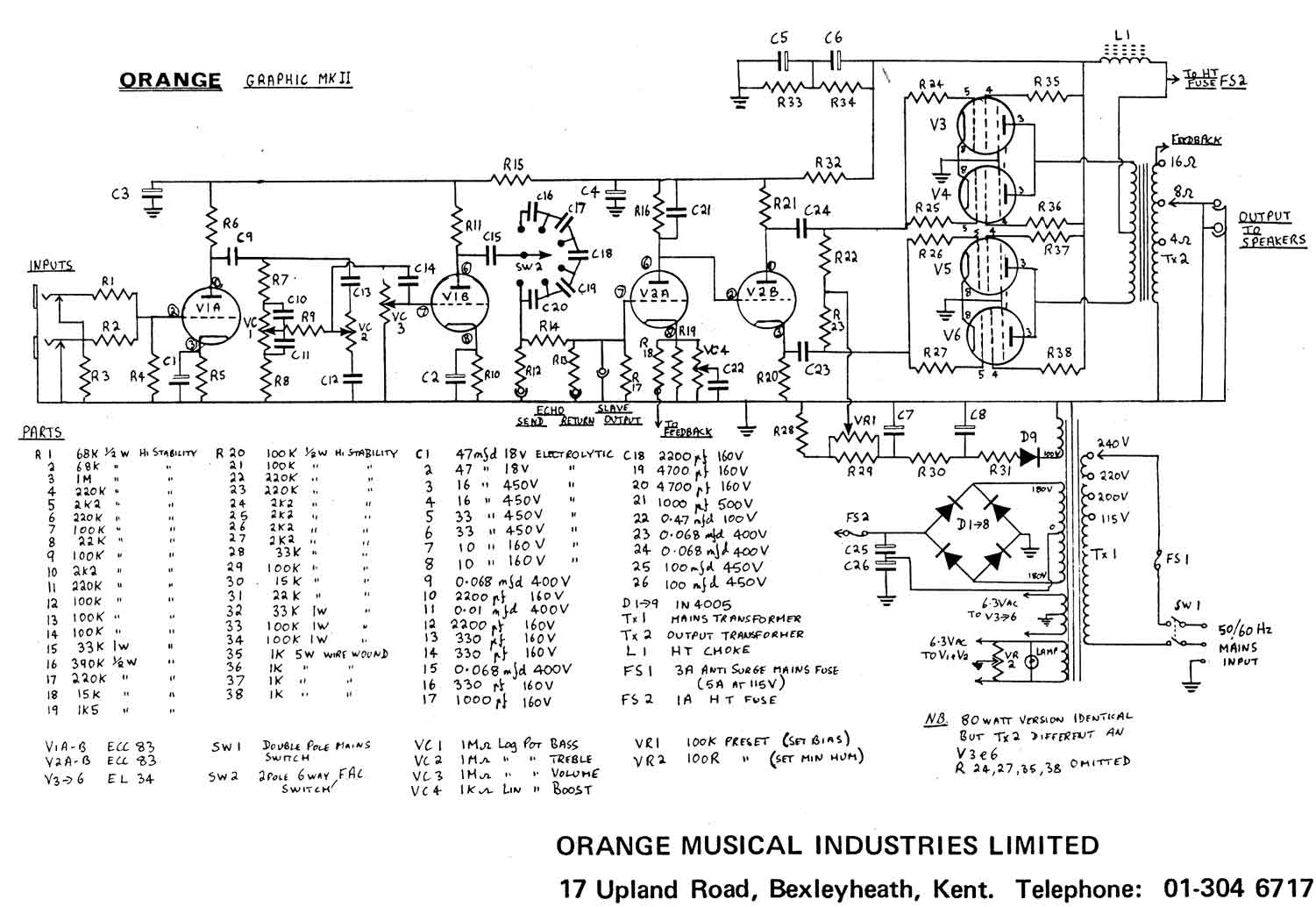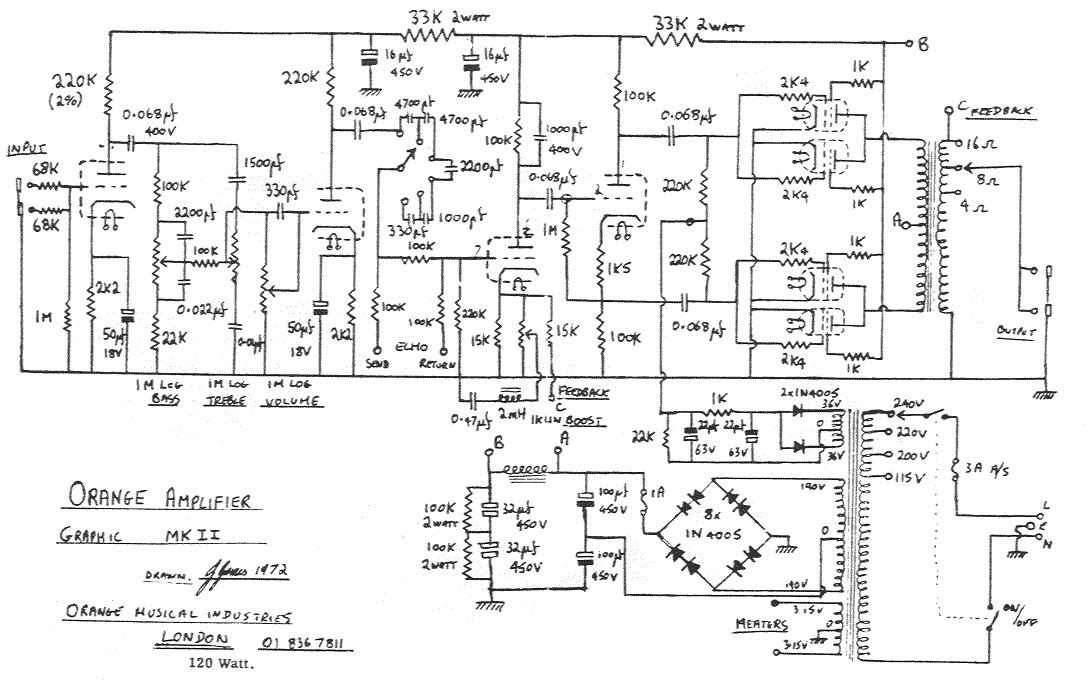Hi! I'm building an Orange OR80 (2xEL34) inspired amp, it's basically the same circuit but with lower voltage PT and post PI MV.
For those who aren't famiiar with the amp, here's an schematic for the 4xEL34 version:

This schematic shows an DC coupled cathodyne PI.
There were some variations over the years, one of those being the change of the DC coupled cathodyne for a AC coupled one, like this one:

I love the simplicity of the DC coupled version, some people like it over the AC version, others like the AC coupled better.
I want to ask you what would be the tonal differences between the two versions, if someone here have ever tried both PI's and compared them.
Thanks!
PD: Sorry for the big images, I couldn't attach them in miniatures, dunno why...
For those who aren't famiiar with the amp, here's an schematic for the 4xEL34 version:

This schematic shows an DC coupled cathodyne PI.
There were some variations over the years, one of those being the change of the DC coupled cathodyne for a AC coupled one, like this one:

I love the simplicity of the DC coupled version, some people like it over the AC version, others like the AC coupled better.
I want to ask you what would be the tonal differences between the two versions, if someone here have ever tried both PI's and compared them.
Thanks!
PD: Sorry for the big images, I couldn't attach them in miniatures, dunno why...
Comment